Major Firms Unite in Adopting 'Wealth Creation Course' for Intelligent Agents, Setting a New Benchmark
![]() 10/09 2025
10/09 2025
![]() 398
398
Have you encountered headlines like these: 'Manus Sparks Intelligent Agent Frenzy: Even Elementary Schoolers Can Develop, Some Earn $100,000 in March,' 'Guide to Prospering with Intelligent Agents: Create One Without Coding, Sell 100 Copies for $80,000, Empowering the Common Folk,' 'Intelligent Agents: The Sole Chance for Post-80s and Post-90s to Transform Their Fortunes'? These captivating headlines flood the scene, portraying intelligent agents as the 'secret to wealth' for ordinary individuals seeking a turnaround.
Last year, intelligent agents emerged as the hottest money-making sector in the tech realm. Overseas, at Google's press conference (launch event), the entrepreneurial legend of 'one individual developing 800 intelligent agents' was frequently cited, with the subscription model for intelligent agents already well-established. Domestically, low-code and no-code development platforms have mushroomed, significantly lowering technical barriers and enabling a vast number of grassroots users, proficient in computer use, to effortlessly develop intelligent agents. Although China boasts more participants and niche applications, the ability to monetize through paid services still trails behind overseas markets.
This year, while the general public is still grappling with how to create 'an intelligent agent that generates income,' major corporations have quietly elevated the competition to a new level.
01 Titans Vie in the 'Intelligent Agent Factories'
In April, Alibaba unveiled the Bailian Platform, offering MCP services that swiftly transform large models into productivity tools for real-world use. Users can construct an intelligent agent application in mere minutes with simple configurations, no coding required.
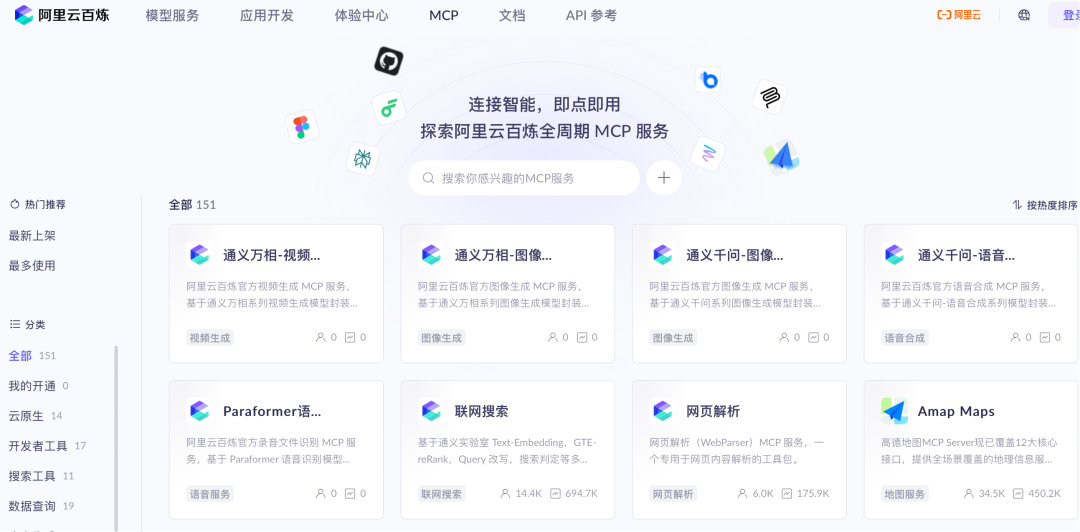
The platform also introduced over 50 MCP services from Alibaba and third parties, including Gaode and Wuying, to cater to the development needs of intelligent agent applications across diverse scenarios.
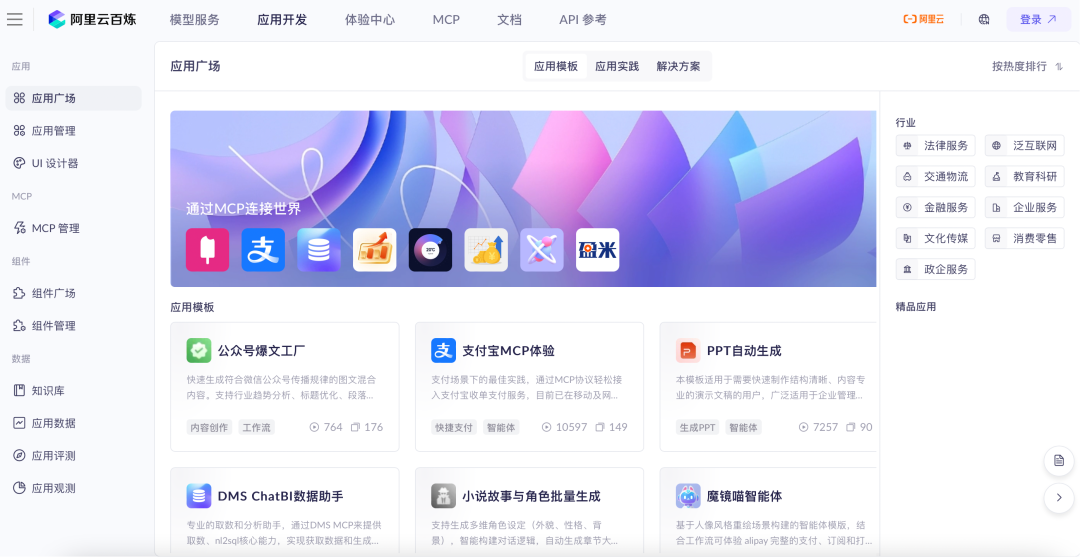
In August, Baidu launched GenFlow2.0, a universal intelligent agent for all devices, capable of supporting over 100 expert intelligent agents operating simultaneously. It can execute more than five complex tasks in parallel within three minutes, with a generation speed 10 times faster than mainstream products of its kind, achieving 'minute-level delivery, process intervention, and traceable memory.'
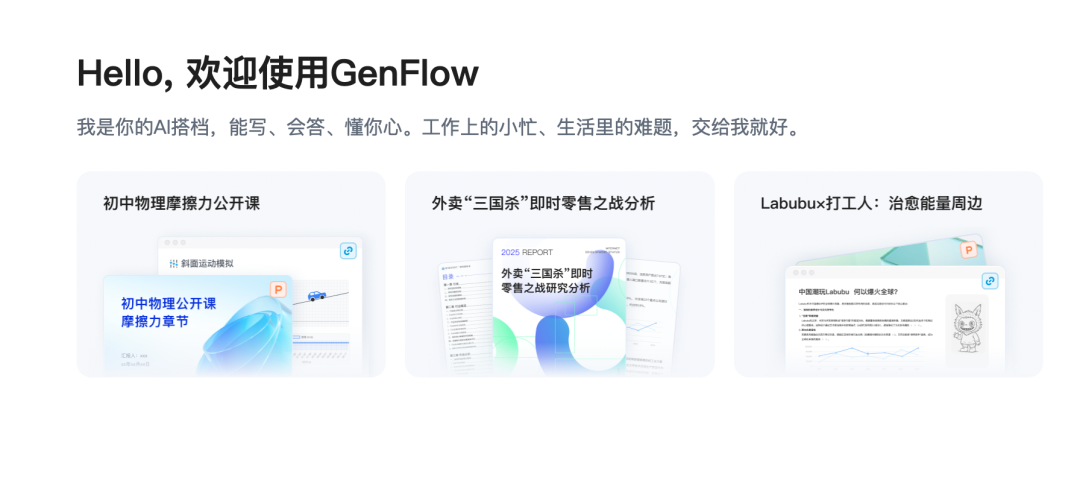
Subsequently, DingTalk introduced 'DingTalk ONE,' powered by intelligent agents. This product utilizes a workflow driven by multi-agent collaboration to summarize and prioritize information scattered across chat, to-do lists, meetings, documents, and other modules in office settings. It then actively presents this information to users in a card stream format, thereby redefining work methods. Now, users can manage schedules, approvals, important messages, and other tasks simply by swiping up and down, akin to browsing short videos.
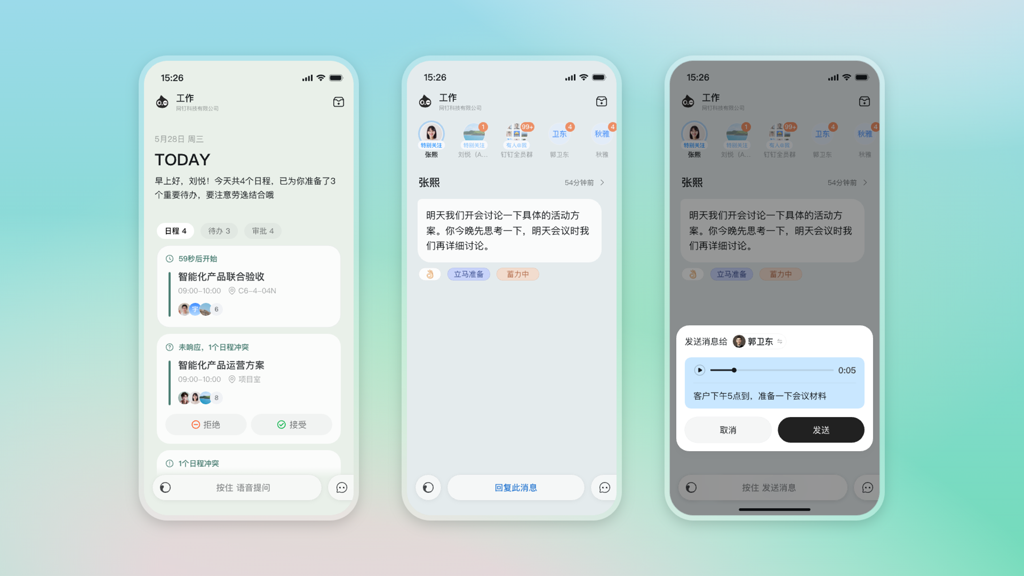
Public data reveals that in the first half of this year alone, over 50 intelligent agent products were launched in the domestic market. From Alibaba to DingTalk, a series of frequent moves signal a clear shift: unlike past tool-oriented explorations of 'from 0 to 1' in single intelligent agents, major corporations are now focusing their competition on the application scenario leap of 'from 1 to N' in multi-intelligent agents.
A fierce competition around the intelligent agent ecosystem is unfolding.
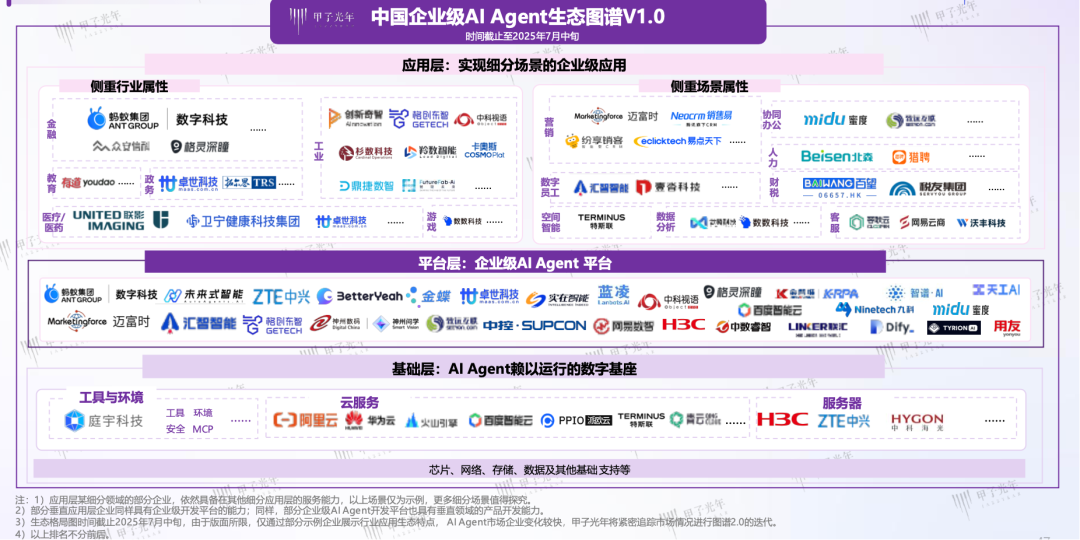
02 The Ascending Value of 'Digital Employees'
In 1831, Faraday invented the first transformer device in human history upon discovering electromagnetic induction. The transformer senses voltage overload and immediately executes a fuse decision—this fundamental decision-making process actually outlines the core operational logic of intelligent agents: sensing the environment, making autonomous judgments, and taking actions.
In today's rapidly evolving artificial intelligence landscape, its progression follows the path of 'chatbots → copilots → intelligent agents.' Chatbots can only respond passively; copilots offer some assistance; whereas intelligent agents represent a fundamental breakthrough by not only 'following instructions' but also 'making decisions and executing tasks.' They can proactively sense the environment, plan task steps, and invoke tools to achieve goals.
In essence, the intelligent agents we discuss today are 'digital employees.' Unlike traditional AI large models, which are confined to monotonous chatting and simple data queries, intelligent agents, although still interacting through dialog boxes for now, are fundamentally about 'execution.' In practical scenarios, intelligent agents can condense traditional human-dependent processes into end-to-end task chains that can be initiated with a single instruction.
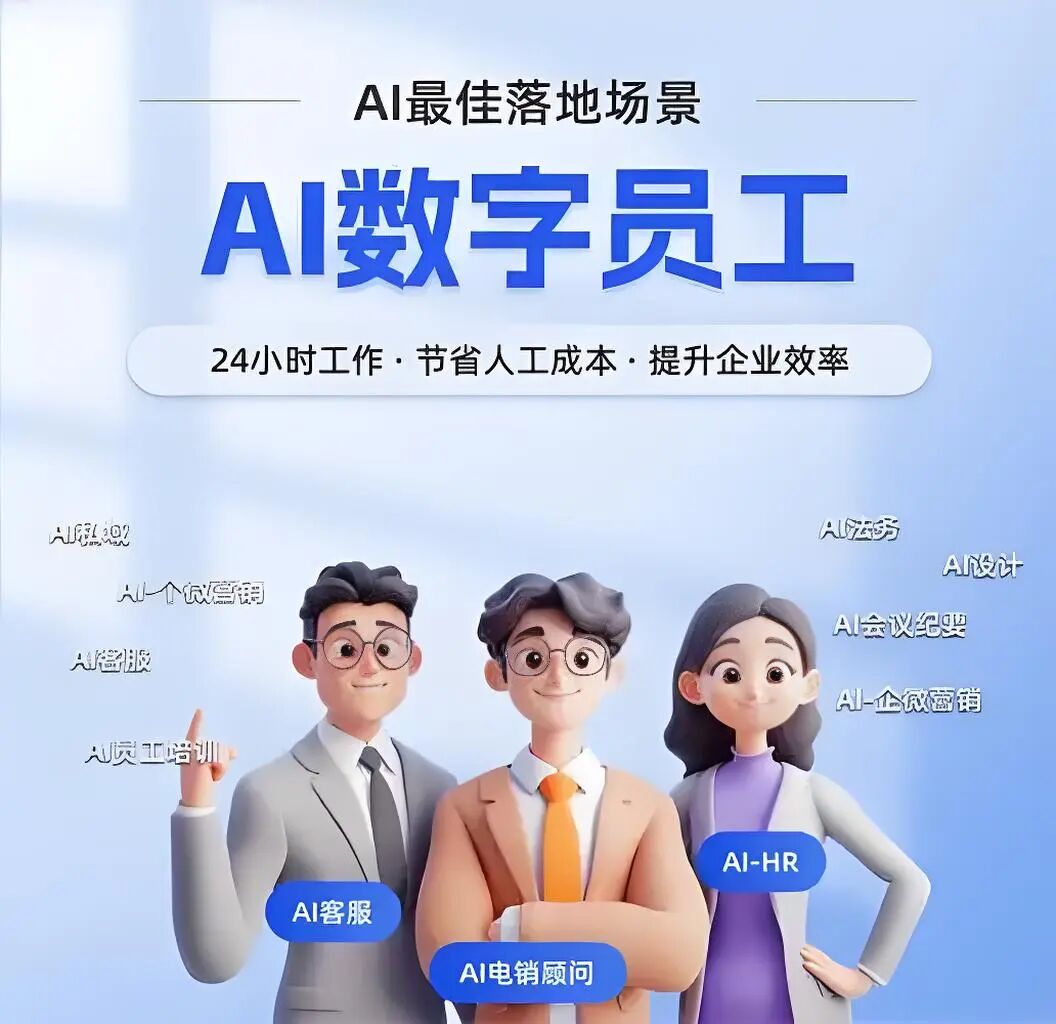
It's noteworthy that 'using a single sentence to let an intelligent agent handle tasks for me, transforming AI into a work partner capable of handling the workload of 10 people simultaneously, boosting efficiency tenfold' is not merely an experiential innovation but also a reallocation mechanism for user access points.
For internet giants, promoting intelligent agents and building an intelligent agent ecosystem can significantly enhance internal efficiency, liberate human resources, and reduce operational costs. Externally, it serves as a core strategy to seize traffic access points and achieve business monetization. Compared to traditional AI capabilities, intelligent agents drive vendors to upgrade from 'selling computing power' and 'selling models' to 'selling solutions' or even 'selling business outcomes.' Companies can charge based on metrics like invocation times, monthly subscriptions, or revenue-sharing based on results, attracting higher-value, more loyal customers. Vendors that first achieve large-scale deployment of intelligent agents on the user side will likely lead the next round of platform traffic reconfiguration and occupy the commanding heights in this intelligent agent-driven business finale.
03 'In-Depth Applications' Fuel Business Monetization
According to Tianyancha and IDC report forecasts, the Chinese enterprise-level AI Agent market is projected to reach a conservative estimate of over $27 billion by 2028. IDC's 'China AI Agent Enterprise Application Status and Recommendations' report emphasizes that the core value of AI Agents clearly focuses on 'large model orchestration capabilities' and 'full-link automation closure,' aiming to propel enterprises from process efficiency improvements to decision-making intelligence.
Simply put, in the traditional SaaS era, enterprises purchased functional modules, interface access points, and service durations. In the intelligent agent era, enterprises will pay for specific task outcomes—such as 'generating an industry research report' or 'orchestrating a complete review process'—rather than the underlying components and systems.
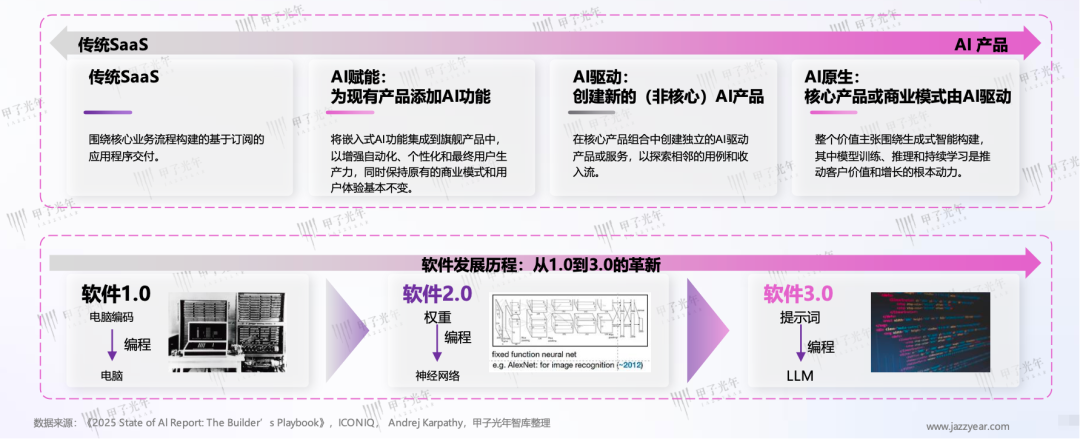
Therefore, the value of an intelligent agent lies not in how many people use it but in how many tasks can be sold, repurchased, and ultimately converted into sustained cash flow. Enterprises will not pay for technological concepts but only for practical value. The industry competition is shifting from comparing AI technologies themselves to vying for technological empowerment and commercialization capabilities. From this perspective, the competition among giants around intelligent agents may have just commenced.
In-depth applications represent the fulcrum for achieving superintelligence and will remain a core topic of discussion in the AI era.
As the industry transitions from the 'laboratory stage' of pursuing technological sophistication to the 'practical stage' of emphasizing business outcomes, only those intelligent agent companies that can truly solve enterprise problems and demonstrate their commercial value will endure in this endurance race.
Perhaps the ultimate outcome of the intelligent agent competition will hinge not just on technological leadership but also on whether these 'digital employees' can genuinely bolster enterprise revenue statements.








